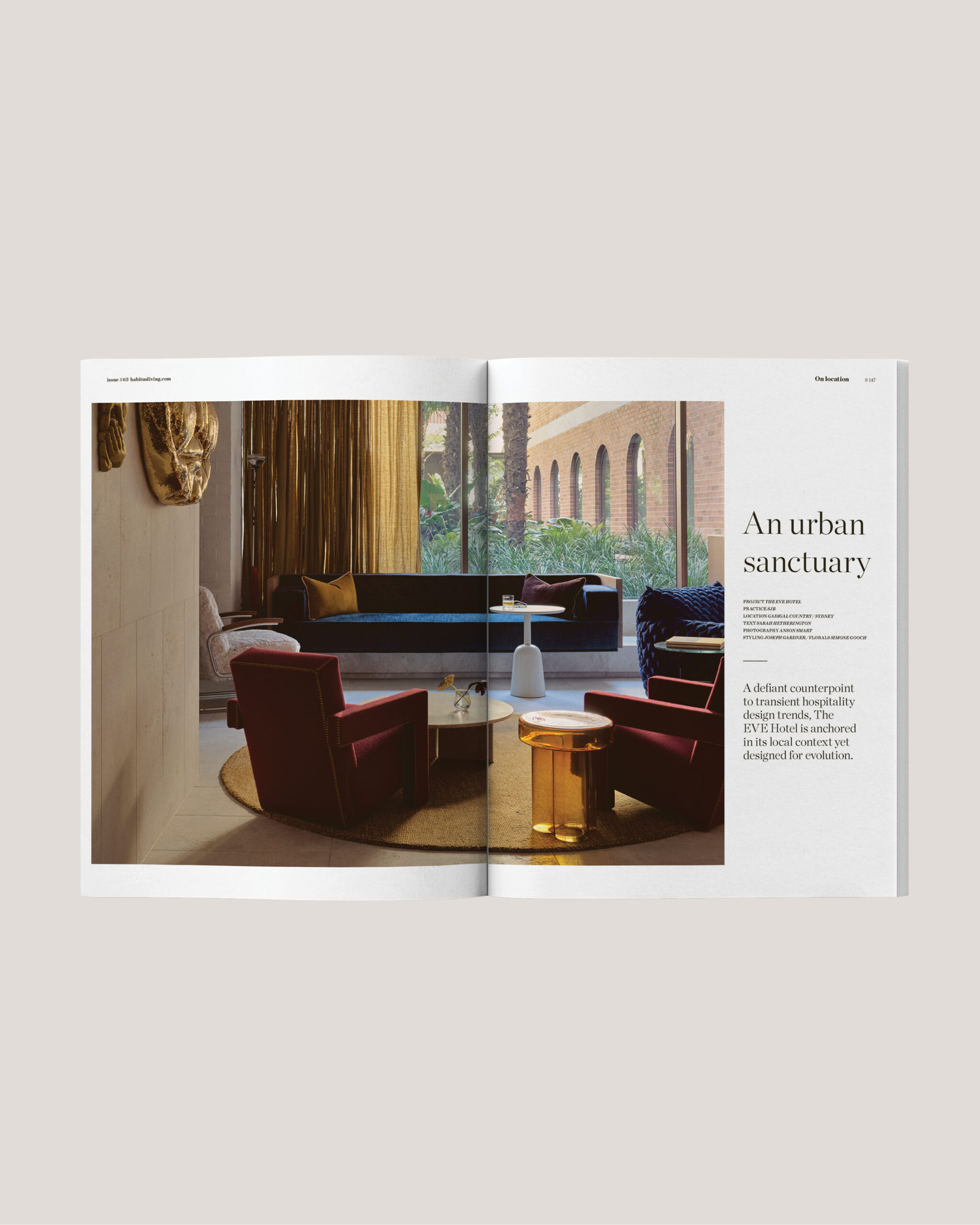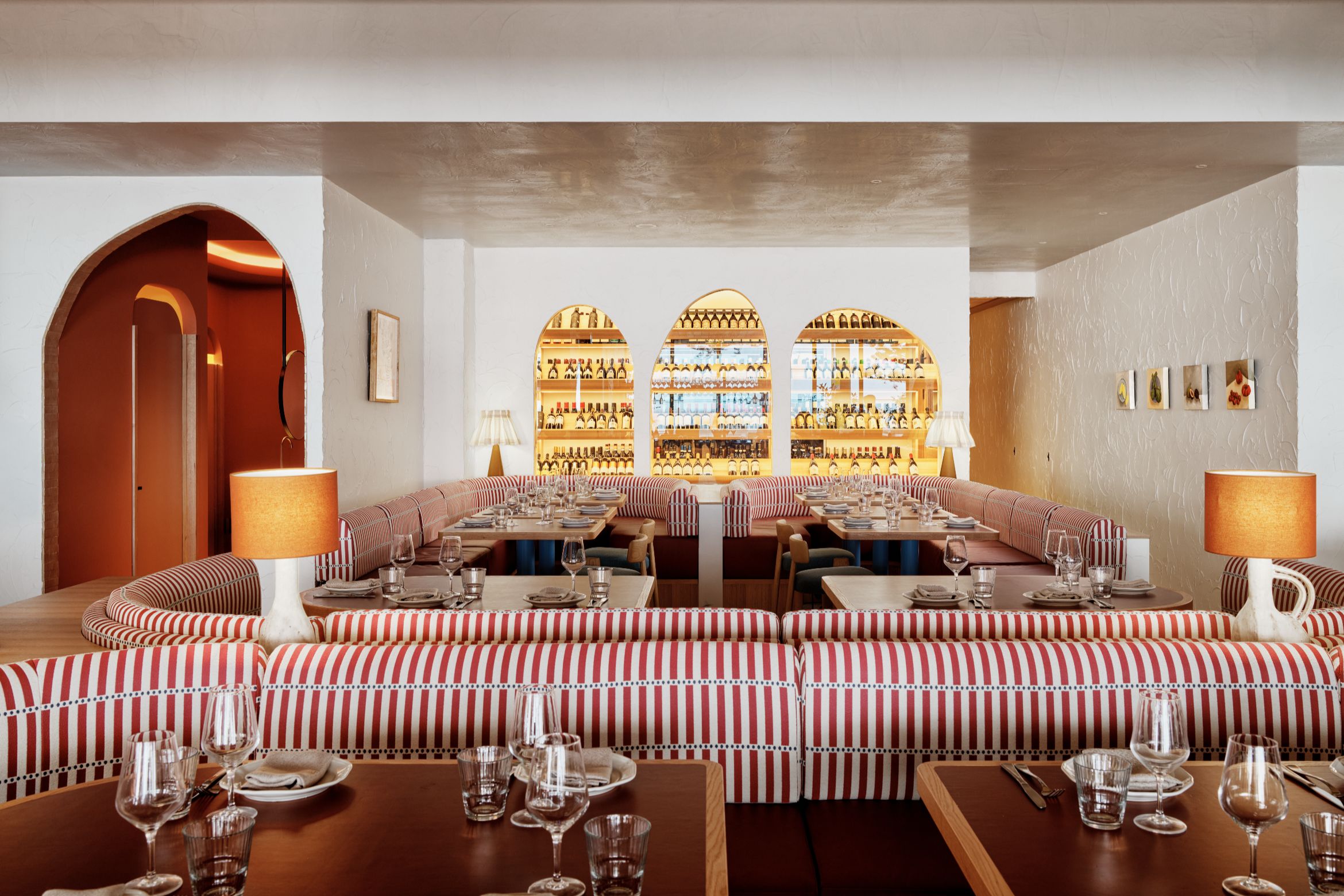This story originally appeared in Habitus Magazine – find out more and subscribe here.
Would you care for a serving of lobster spaghetti followed by a coppa of pistachio gelato in a quintessential Sydney beachside suburb with a little seasoning via Sardinia? These are two of Luchetti Krelle director, Rachel Luchetti’s favourite dishes at Cibaria, the new Italian restaurant she and co-founding director Stuart Krelle have designed in Manly for chef Alessandro Pavoni. Highly regarded for his flair and experimentation, the Michelin-trained chef and restaurateur holds an Italian portfolio of note, including Ormeggio at The Spit, Chiosco by Ormeggio and A’Mare.
“I love the lobster spaghetti and the pistachio gelato is incredible,” says Luchetti, quickly adding: “The fried lasagne bites are also awesome.”
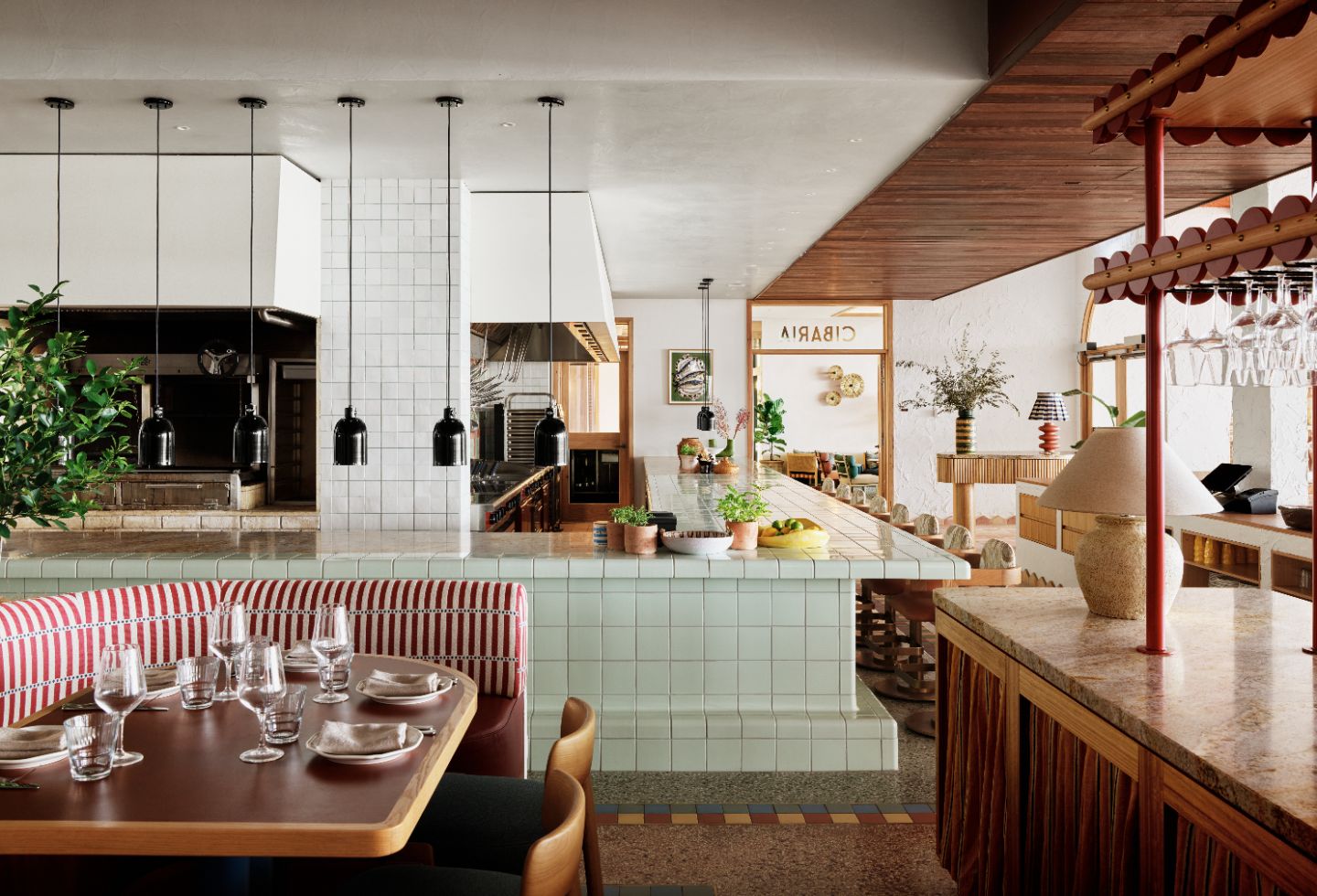
In a serendipitous case of synaesthesia at play, the colours and flavours of the lobster, gelato and lasagne echo the restaurant’s arched alabaster plaster walls and the pistachio-flecked terrazzo flooring. It is a nuanced layer to the immersive and inimitably Italian seaside-meets-Australian Northern Beaches experience. Sardinia, where Pavoni once worked, was a particular inspiration.
“There are certain things he borrows from Italy in his cooking, so we took the same approach with some Sardinian references and a nod to Puglia’s white masserias (farmhouses) and open kitchens along the way,” says Luchetti.
So, what does liberating a little of la dolce vita look like in one of Australia’s most popular coastal destinations?
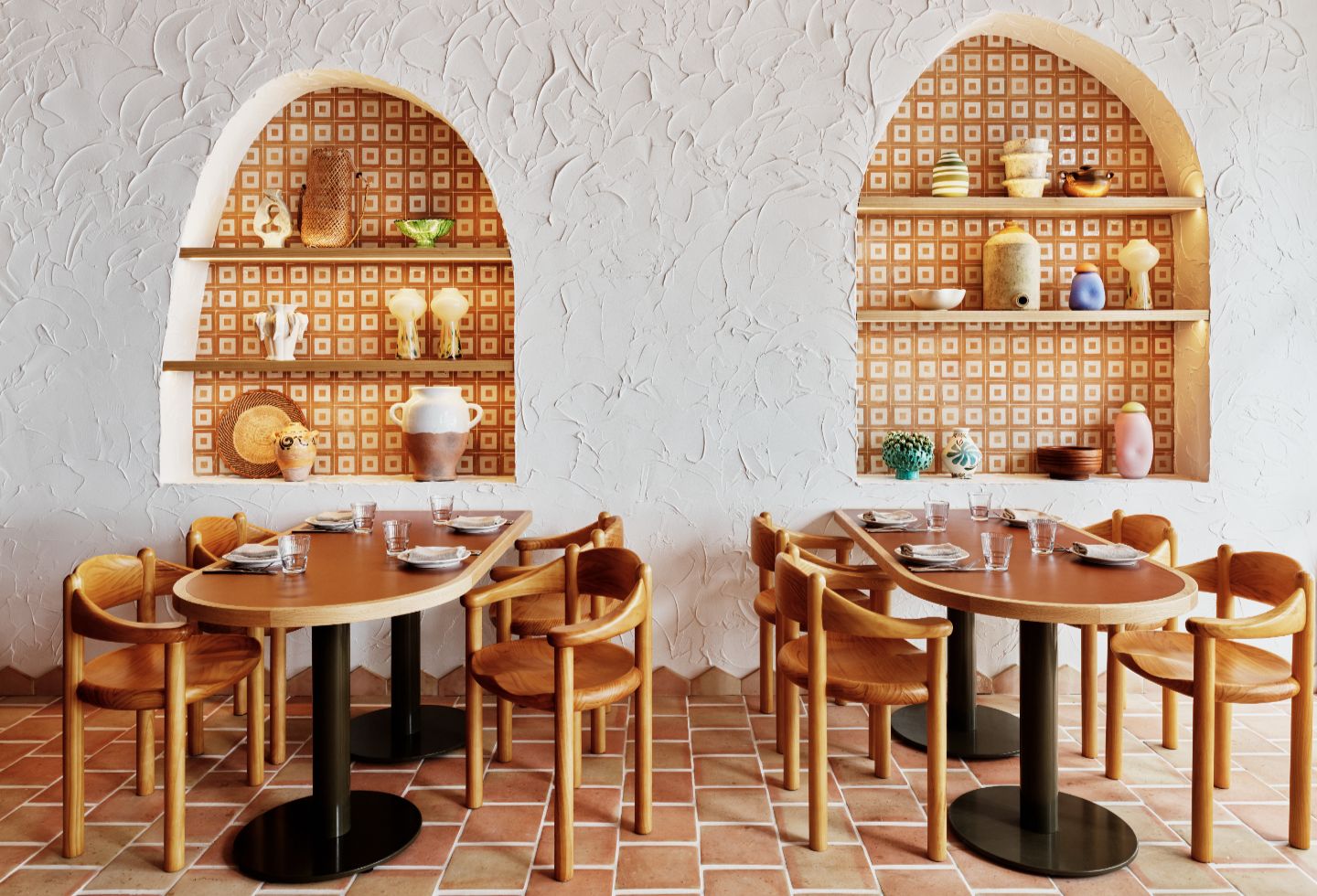
For starters – to begin, not entrées – it should be noted that Cibaria is a magnificently multidisciplinary proposition, as noted on the restaurant’s striped awning which proclaims Cibaria a Spaghetteria, Bisteccheria, Friggitoria, Salumeria and Gelateria, trading from sunrise until late into the evening. As for the name itself, it is a recreation of the casual social atmosphere of an Italian piazza, with Ciba meaning food and ria noting an amalgamation of all the Italian street cooking styles ending in ‘ria’ such as trattoria, osteria and pescaria.
Given the plethora of offerings, a key challenge when it came to the architecture and interiors was creating a seamlessly integrated yet differentiated experience for visitors to cycle through the venue and use in multiple ways at different times throughout the day.

“What we wanted from the outset was that it had to appeal to everyone. Whether you are sandy and wet off the beach or dressed up to the nines, you should feel comfortable and catered to whatever you want whenever you want it,” says Luchetti.
Ironically, the casual and buzzing oceanfront space is energised by some serious formal planning. Hubs include pulling up a pew within the Gelateria or settling on to a more intimate banquette for a bowl of silky pasta, frutti di mare or bistecca and a velvety vino overlooking the ocean. Visitors can grab a takeaway coffee for their stroll along the prime Northern Beaches oceanfront or linger over an aperitivo with waterfront views. Two open kitchens offering bar seating further divide the space into cosier settings: the primary Bisticcheria/ Spaghetteria kitchen, and the smaller space dedicated to preparation of antipasti that houses the forneria (bakery) oven.
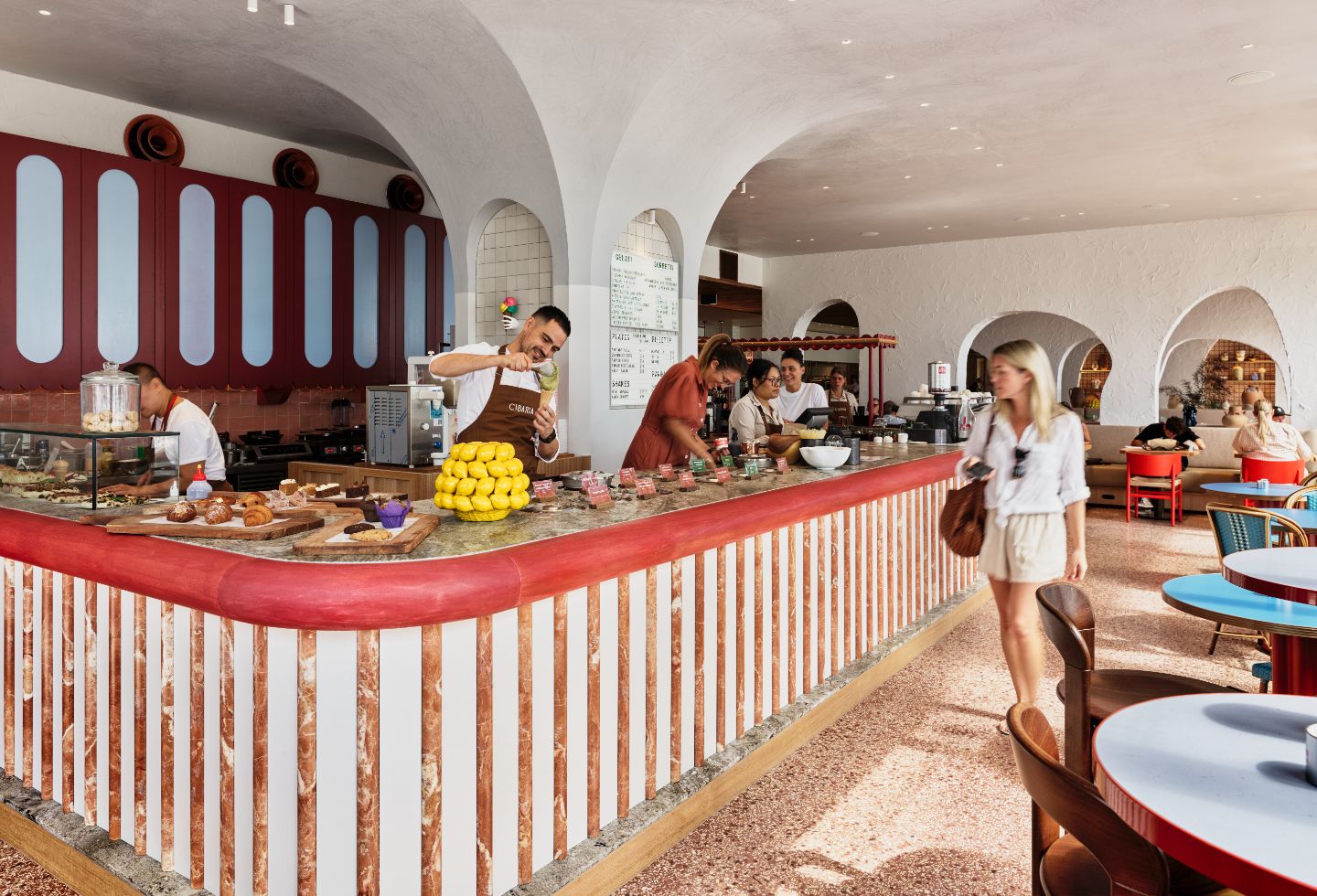
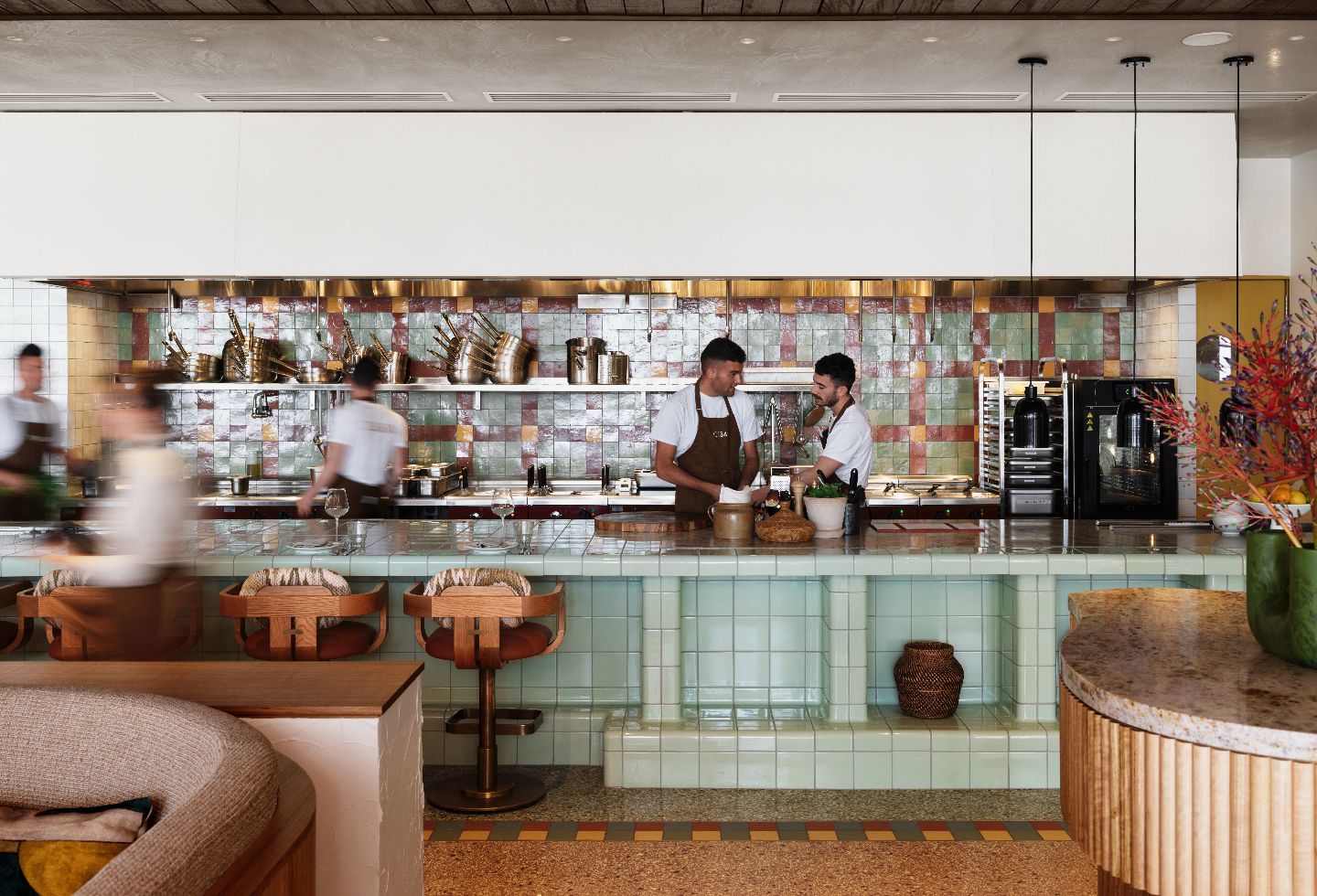
Two private dining rooms cater to larger gatherings and a potent mix of pigment and materiality throughout incorporates assorted stone, terracotta tiling and colourful printed fabrics to complement the diverse and bold modern Mediterranean menu.
“The mash-up is about being energised because the Italian chef and his team are all very colourful and about having fun,” says Luchetti. “You don’t want to necessarily feel like you’re in a serious restaurant, but you can do some serious eating… or just come in for a bowl of pasta and a glass of wine.”
Related: More from Luchetti Krelle
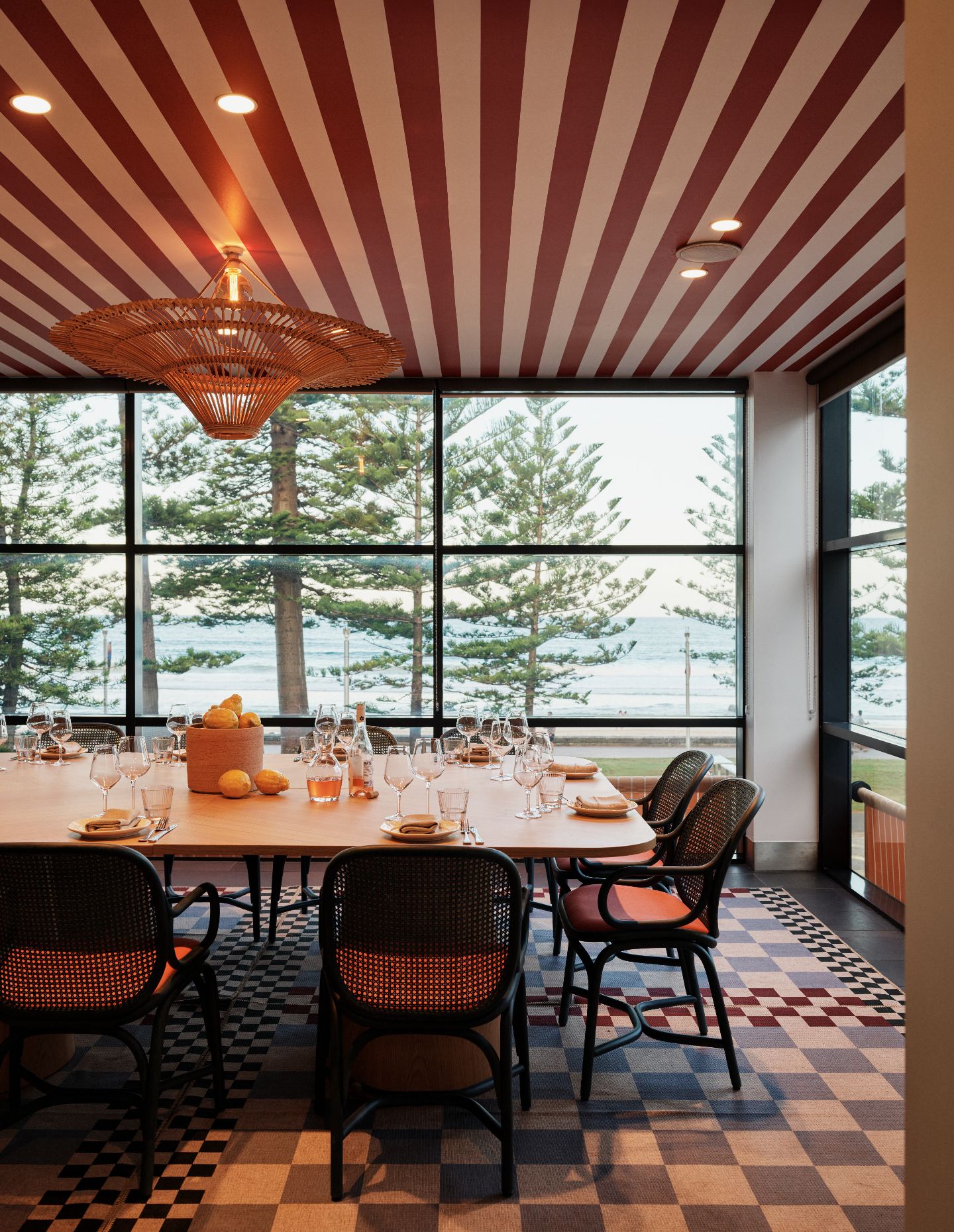
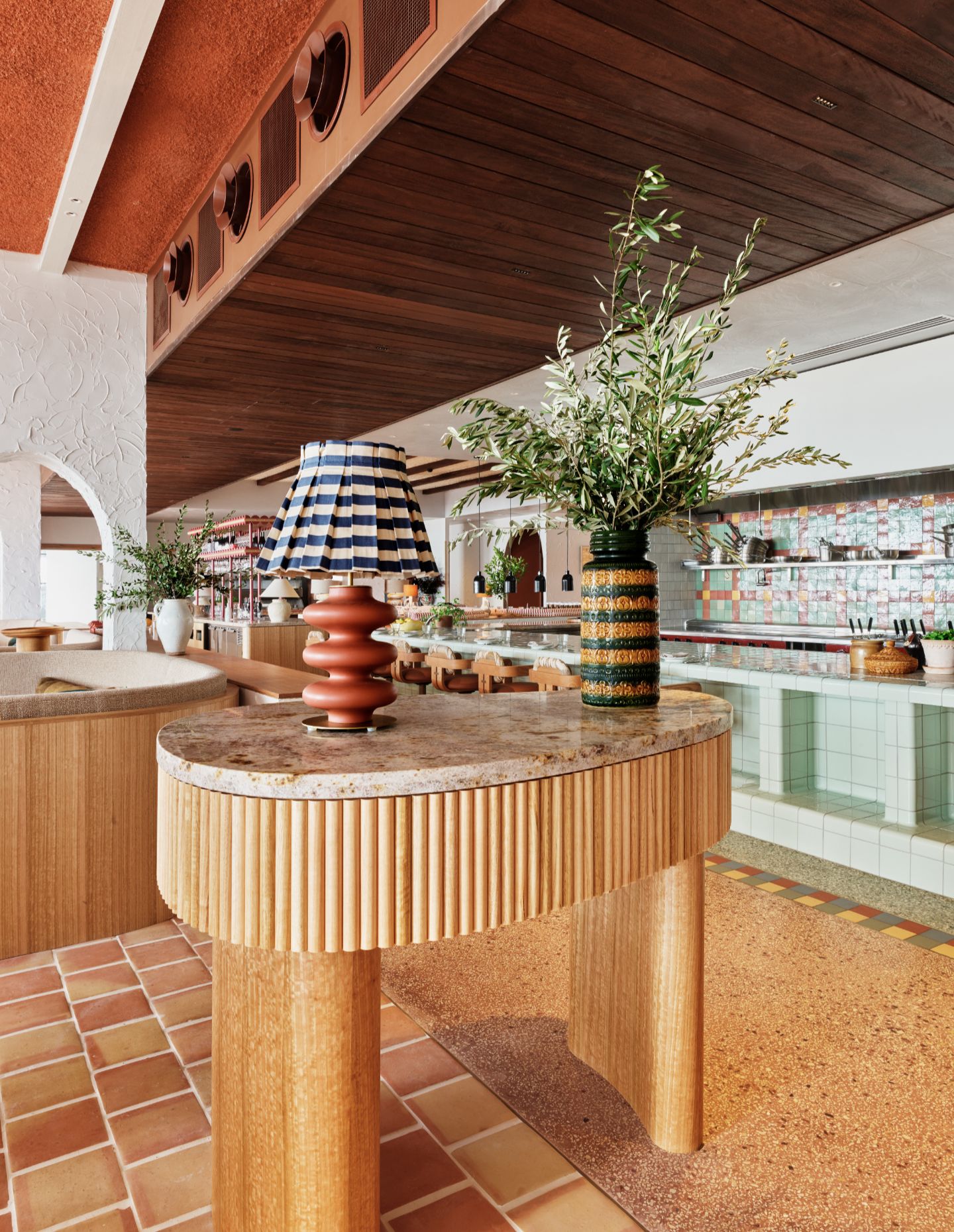
A unifying, nostalgic base palette of red, white and green features throughout, although the classic Italian primary tones have been modified to avoid pastiche and add panache, substituting tomato reds with deep burgundy and rich terracotta shades, while gelato greens supersede the more verdant iteration.
“It’s concept-heavy but hopefully it doesn’t come across as too theme-y,” says Luchetti. “It’s also about edible colours, including the pistachio gelato on the flooring and the lemon-yellow wash.”
The space was formerly a Japanese restaurant and bar (including a club and dancefloor), so another consideration was how to open and brighten the setting and optimise its dress circle coastal views. The solution was to raise the ceilings to their maximum height and add a bulkhead to conceal services. Confusing bi-folding doors have been replaced with sashless windows and a dedicated central entrance that enhances the indoor-outdoor flow. Archways and rustic timber beams have been added for a southern Mediterranean mood.
“We wanted you to feel like you’re in an Italian villa so we borrowed elements from French architect Jacques Couëlle’s Surrealist design of Sardinia’s Cala di Volpe hotel in Costa Smerelda,” says Luchetti, of the organically shaped windows and portals carved into textured stucco walls beneath timber beams. Concealed downlights within the beams give the illusion of sunlight streaming down during the day.
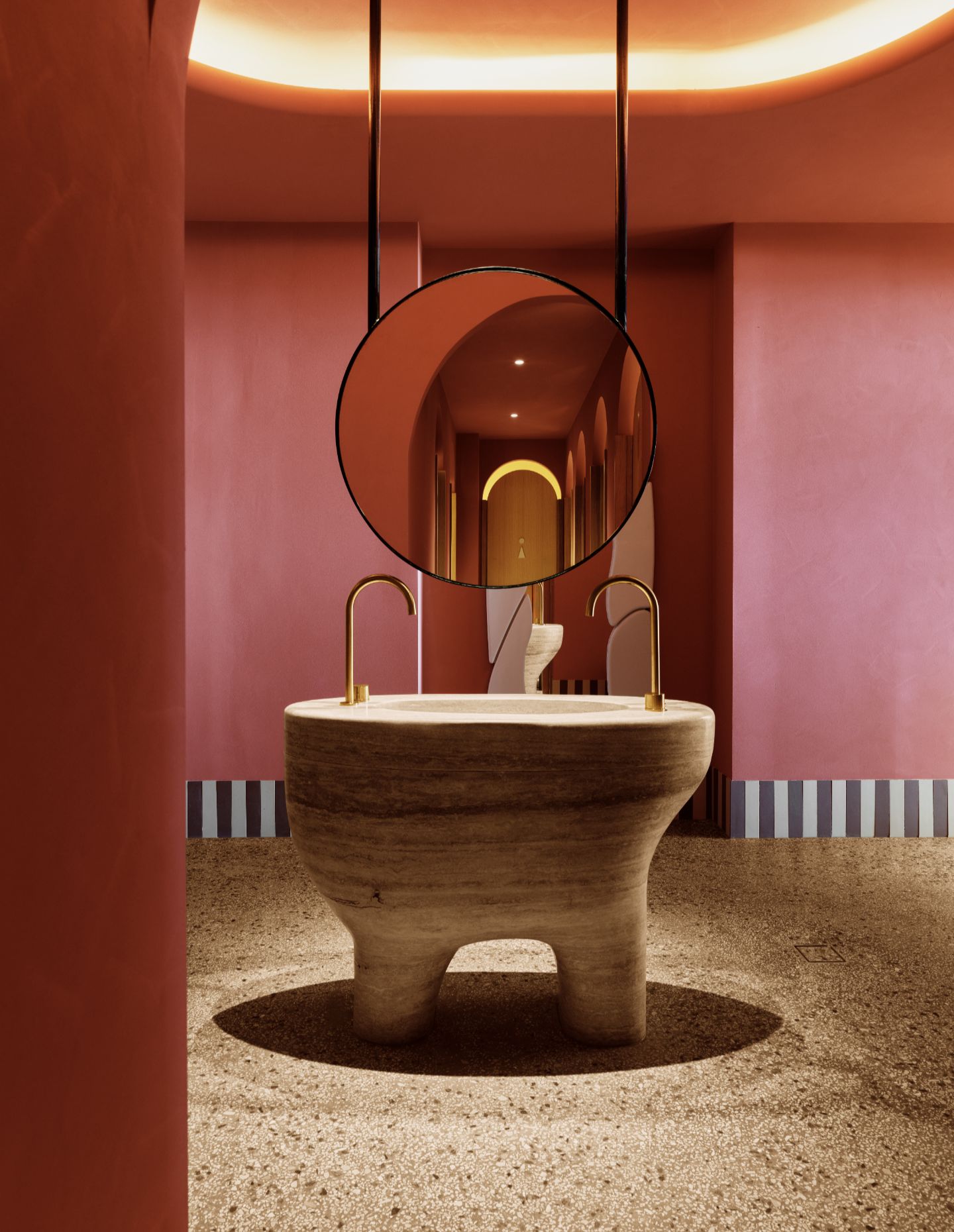
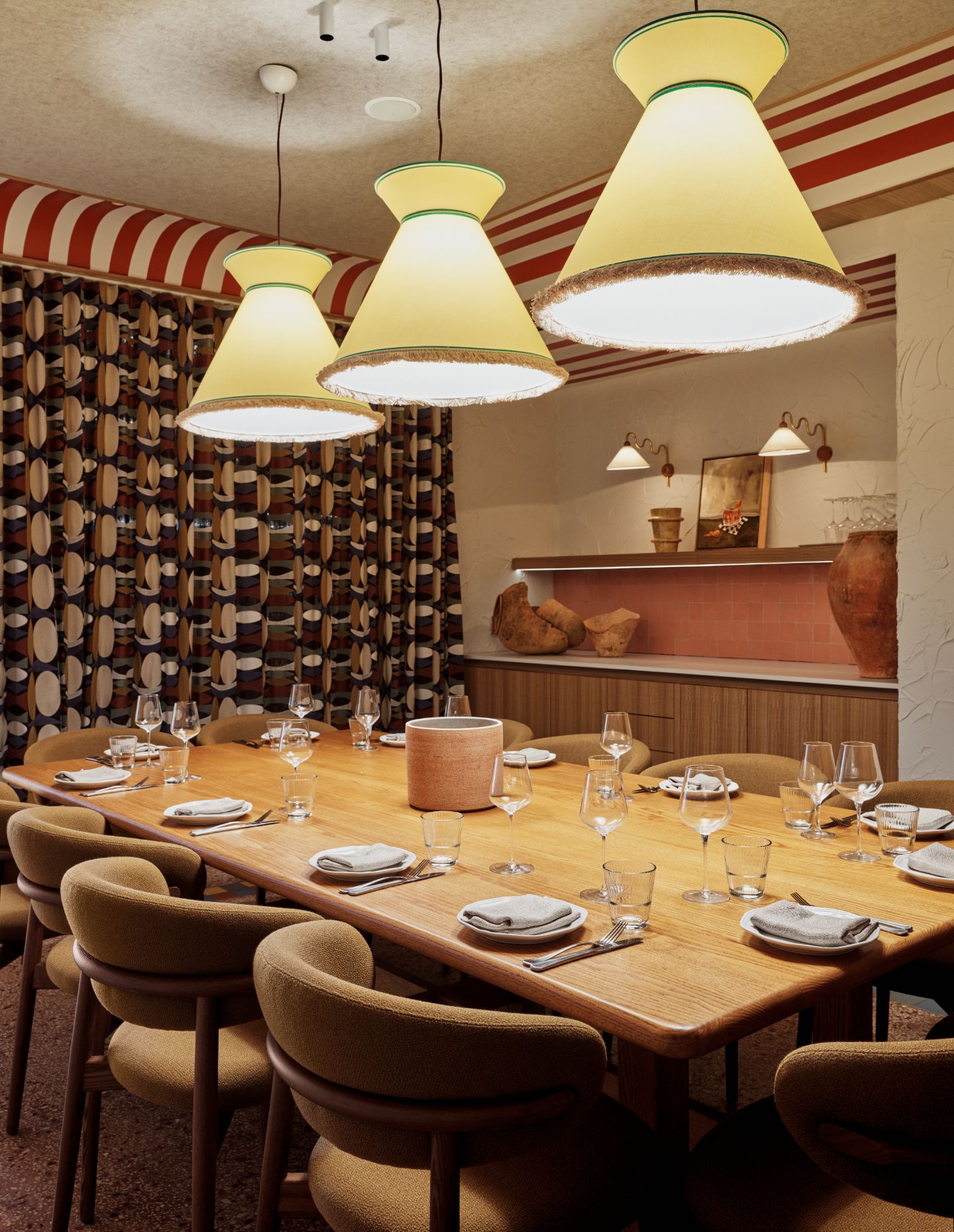
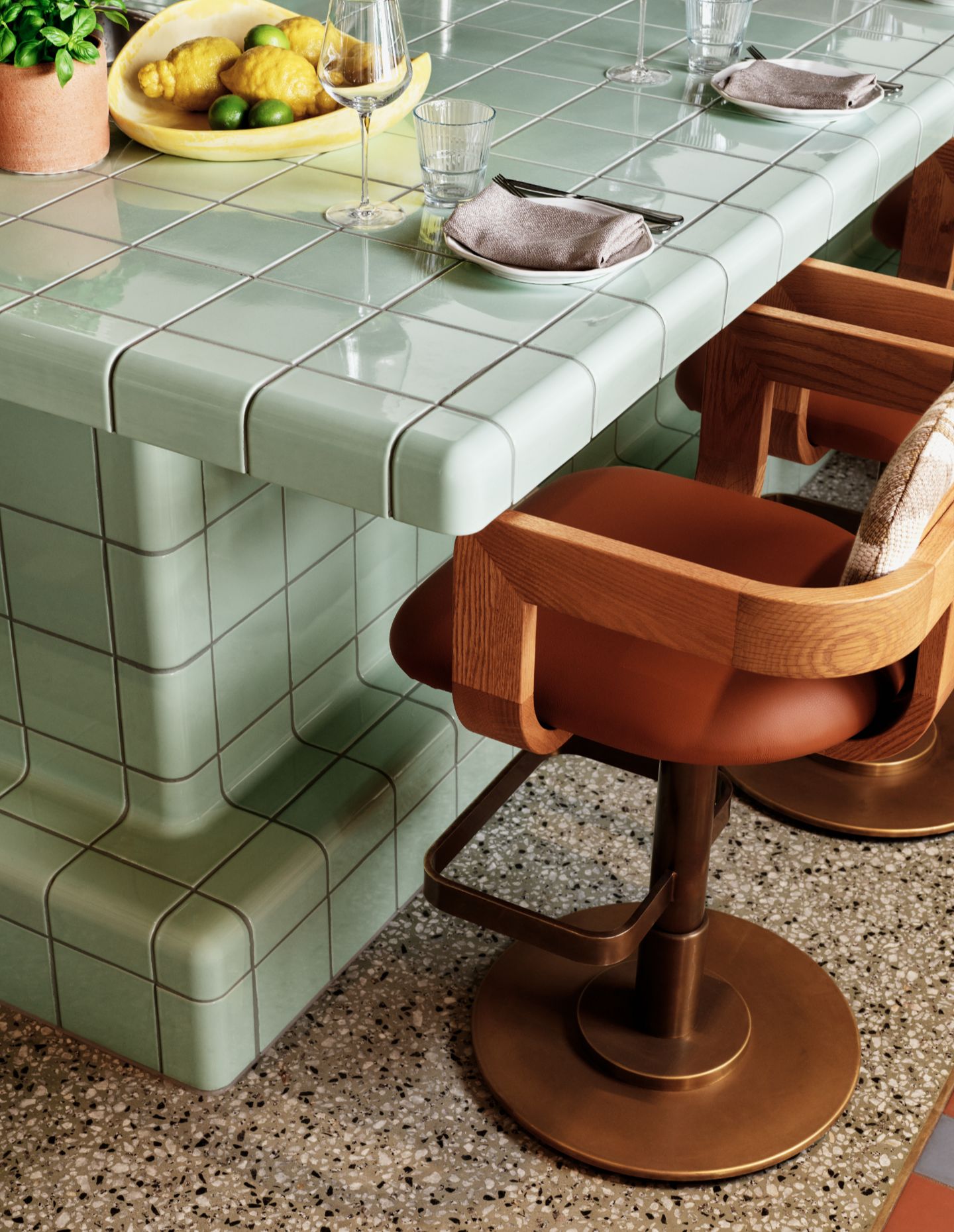
A standout feature is in, of all places, the bathroom, where an organic and animalisticly curvaceous custom travertine sink is the showstopper for sanitising with sex appeal. The unique form was commissioned to be carved from a solid block of travertine by Surface Gallery, and it is magnificent beyond words.
It is all part of Luchetti Krelle’s vision for a playful and deeply personal piece of Puglia set against the Norfolk pines of the Northern Beaches. The result is a quintessential Italian experience of quality food and wine without the 20-hour flight.
“It’s about psychological and physical comfort, long summer days and escaping into the warmth in winter,” says Luchetti. “We want people to go in for coffee, roll on to lunch and not get worried about getting kicked off the table at 5pm while they soak up the view.”
Saluti! Mission accomplished.
